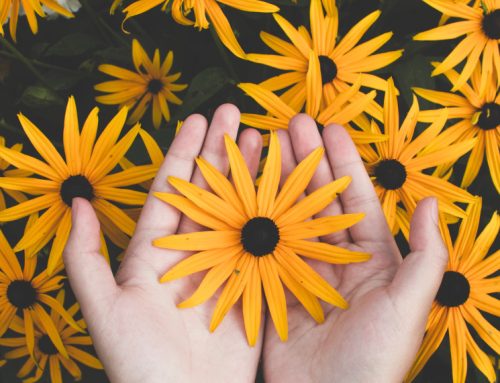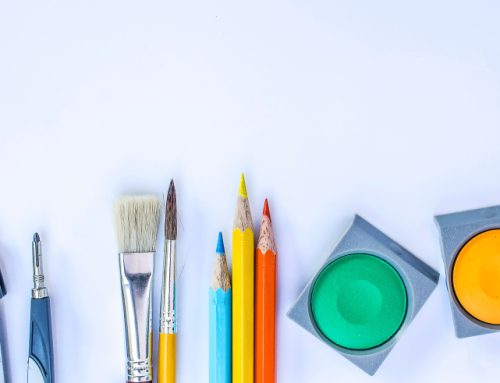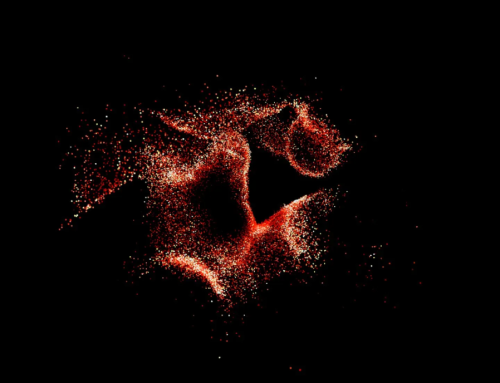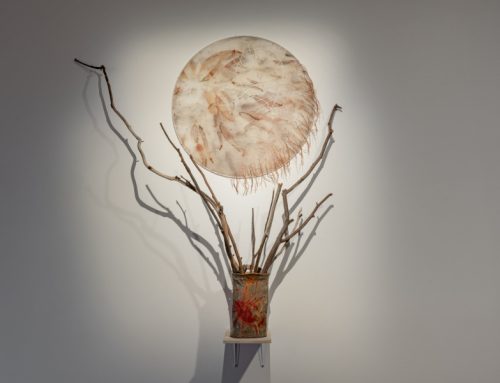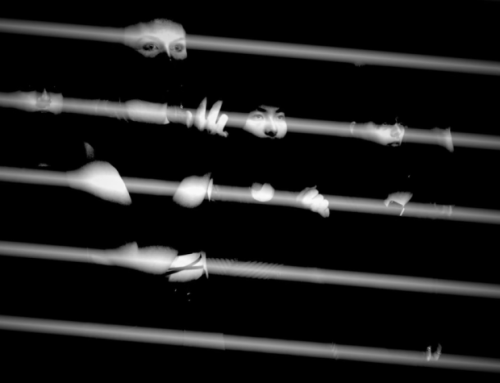Shan Richards is a visual artist residing at May Street Artists Studios in St. Peters, Sydney. She is devoted to fostering connections and empowering artists within her community, and a passionate advocate for mental health awareness, believing that creativity can aid in healing. In this article, Shan provides some insight into MDOK, a wellbeing program for staff at Sydney Local Health District. The pilot initiative was led by NSW DHAS’s art therapist, Kathleen Openskies, who worked with 50 healthcare workers at Sydney’s Royal Prince Alfred Hospital.
The Power of Art in Healthcare: Supporting our healthcare workers’ wellbeing through creative interventions
Art has long been recognized as a powerful tool to improve mental and physical wellbeing. This was particularly evident during the COVID-19 pandemic, where the need for stress relief, creative outlets, and connection was suddenly amplified. It was especially true for our healthcare workforce who bravely put themselves in harm’s way to help protect the community during this unprecedented time. What many people don’t know however, is that prior to COVID-19, the healthcare workforce was already suffering from high levels of emotional exhaustion and burnout. Burnout not only harms the individual, but it also affects the quality of patient care and the entire healthcare system. That’s why it’s vital that we continue to support our healthcare workers and recognize the value of art in their healing and wellbeing.
My name is Shan Richards, and I am a practising artist,

Shan Richards, visual artist, committee member for the Inner West Creative Network, and MDOK Program Manager at Royal Prince Alfred Hospital (RPA)
I sit on the committee for the Inner West Creative Network, and am the MDOK Program Manager at Royal Prince Alfred Hospital (RPA). Over the last four years, I’ve had the privilege of being part of the MDOK team, a dedicated staff wellbeing initiative that has been working with Sydney Local Health District doctors and healthcare workers to optimise their wellbeing and prevent burnout. I am extremely passionate about the intersection of art and medicine, and how creative-based interventions can have a powerful impact to help improve the sense of community and wellbeing of staff in a healthcare setting. One of the most fulfilling and rewarding aspects of my role has been utilising art therapy to help healthcare workers find moments of calm and relaxation, have some fun, and reconnect with themselves and their peers. And our evidence shows us that when this happens, not only is the individual’s sense of wellbeing and connection improved, but it also leads to improvements in patient care.
So why do doctors need a wellbeing program?

Coming from a medical family, I have gained some insights into the unique and often “silent” pressures that come with a career in medicine. I witnessed first-hand how wellbeing strategies, including creative pursuits, were usually deprioritised in place of long shifts, high stakes exams, and other work related activities. I witnessed how the patient always comes first, no matter what, even at the expense of the doctor’s own wellbeing. The well-known metaphor of putting your own oxygen mask on before helping others oddly didn’t seem to apply to doctors themselves, and any help seeking behaviours were actually seen as a weakness. Amazingly, most doctors did not even have their own general practitioner. So with a group of people hard wired to care for others, working in a system under never ending pressure, who have a culture of not seeking help, the low levels of wellbeing and high levels of burnout should come as no surprise. The benefits of art therapy in healthcare are well-documented. Studies have shown that engaging in creative activities can help reduce symptoms of anxiety and depression, enhance problem-solving abilities and coping strategies, and improve overall mental health and wellbeing. That is why MDOK teamed up with the NSW Doctors’ Health Advisory Service to pilot art workshops for healthcare workers, called “Creative Connections”. These workshops were designed to guide participants through the creation of a piece of art, focusing on being in the present moment, and on the process, rather than the end result.

The pilot initiative was led by NSW DHAS’s art
therapist, Kathleen Openskies, who worked with 50 healthcare workers at Sydney’s Royal Prince Alfred Hospital. At the end of a one hour session, participants were surveyed about their experience. The results were overwhelmingly positive. All participants reported a reduction in stress levels and agreed that the sessions created an opportunity to relax, connect with colleagues, debrief and foster a sense of collegiality. An impressive 81% felt more able to tune into their personal needs, and 91% were prompted to think more about self-care. The majority of participants (91%) also indicated that they would attend more sessions if offered.
Some hidden talents were also unveiled!
Following the early success of “Creative Connections”, MDOK were invited to present this work to a national audience at The Australasian Doctors’ Health Conference. As a result, we have seen growing interest from other hospitals and healthcare facilities to implement similar creative initiatives for their staff. The implementation of art sessions is an example of a small but powerful step to help support the wellbeing of our healthcare workers. It now forms part of the “menu of wellbeing options” that are available to staff as part of the MDOK program. Through initiatives like Creative Connections, we can support the mental and emotional wellbeing of healthcare workers and promote a culture of self-care and compassion in healthcare. I believe that the future of healthcare lies in the integration of the arts, and I am excited to continue working in this field and seeing the positive impact it has on the lives of all healthcare workers.
Shan Richards
Visual Artist & RPA MDOK Program Manager
Shan Richards is a visual artist and painter based in Sydney, Australia. She works out of May Street Artists Studios in St. Peters, Sydney and exhibits her work nationally and internationally. Shan is also involved in the MDOK program, a wellbeing initiative for doctors and healthcare workers in the Sydney Local Health District, and sits on the committee for the Inner West Creative Network.


